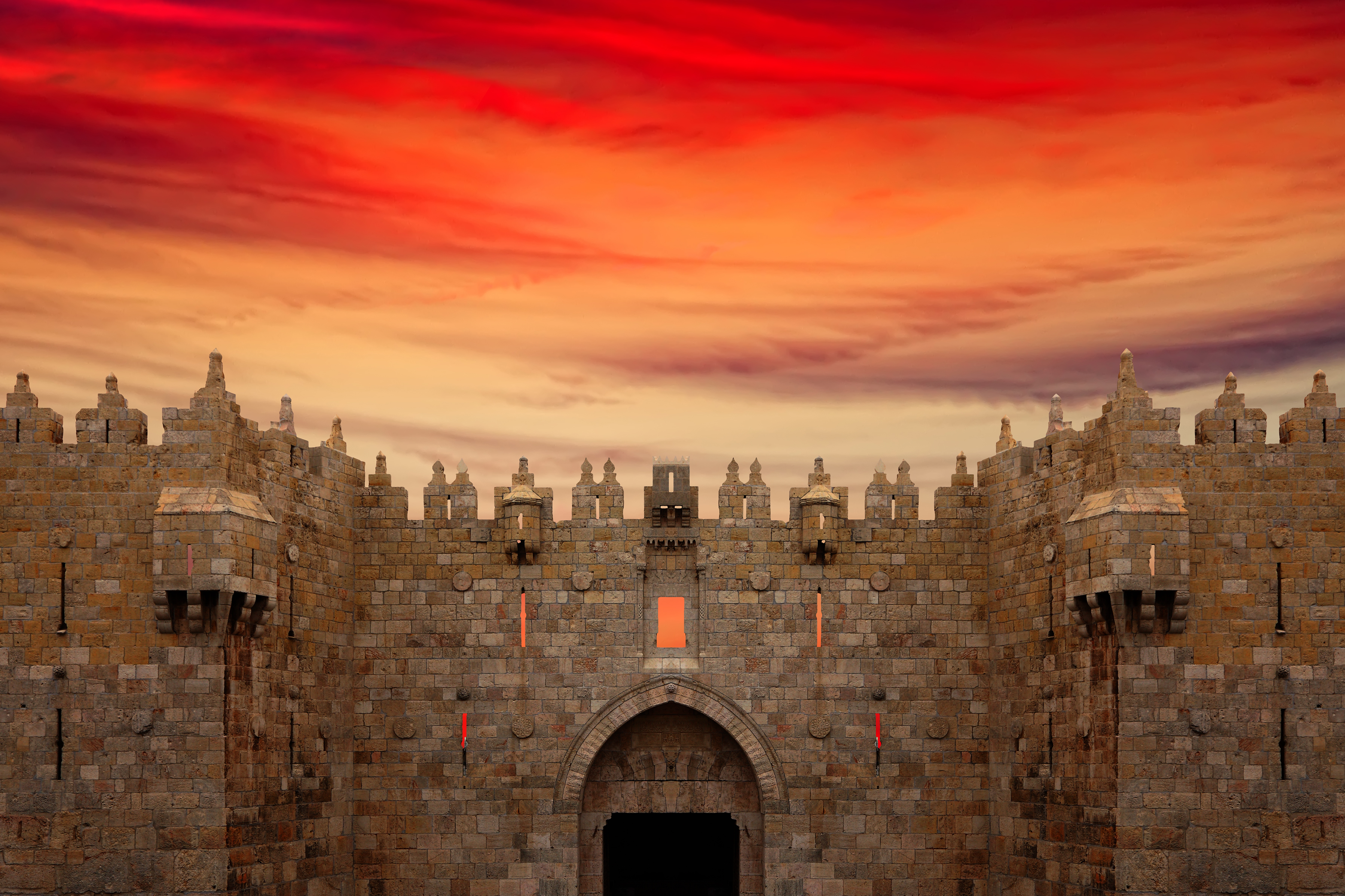When lining up the end-time events described in the book of Revelation with the description of end time events in the book of Joel, it becomes clear that the first two fall feasts, the Day of Trumpeting and the Day of Atonement mirror the progression of the great and terrible day of the Lord just before His return, when the armies of the antichrist descend upon the land of Israel and surround Jerusalem:
Day of Trumpeting (Joel 2: 1-11)
Blow the trumpet in Zion;
sound the alarm on my holy hill.
Let all who live in the land tremble,
for the day of the Lord is coming.
It is close at hand—
a day of darkness and gloom,
a day of clouds and blackness.
~Joel 2:1-2
In the above passage of Joel, the sounding of the trumpet is an alarm to assemble the people together because a horrible and fierce enemy has invaded the Land—it is the “last” Day of Trumpeting. It is also the moment that the Lord Yeshua appears in the sky with the voice of the trumpet and the those who are in the Lord are raptured:
Rapture at the Last Trumpet (Matt. 24:30-31)
Then the sign of the Son of Man will appear in heaven, and then all the tribes of the earth will mourn, and they will see the Son of Man coming on the clouds of heaven with power and great glory. And He will send His angels with a great sound of a trumpet, and they will gather together His [elect from the four winds, from one end of heaven to the other.
~Matt. 24:30-31
Day of Atonement (Joel 2:12-17 )
Blow the trumpet in Zion,
declare a holy fast,
call a sacred assembly.
Gather the people,
consecrate the assembly
~Joel 2:16-17
In this passage, the prophet Joel is calling all the people to declare a holy fast, to weep, mourn and cry out to the Lord to save them—a description which sounds like the Day of Atonement. While this passage clearly speaks about the Day of Atonement, it also calls for a trumpet to be blown in Zion, which makes one think that it might be referring to the Day of Trumpeting since no trumpets blown on the Day of Atonement. Well, yes and no: there are no trumpets blown on the Day of Atonement except for once every fifty years during the Jubilee year:
Count off seven sabbath years—seven times seven years—so that the seven sabbath years amount to a period of forty-nine years. Then have the trumpet sounded everywhere on the tenth day of the seventh month; on the Day of Atonement sound the trumpet throughout your land. Consecrate the fiftieth year and proclaim liberty throughout the land to all its inhabitants. It shall be a jubilee for you; each of you is to return to your family property and to your own clan. The fiftieth year shall be a jubilee for you.'”
~Leviticus 25:9-11
If the last “Day of Atonement” at the Lord’s return takes place in the Jubilee Year (which we believe it will!) it adds another powerful dimension of prophetic meaning to this “last” Day of Atonement when a trumpet will sound declaring salvation, liberation and restoration.
All Israel Will Be Saved

Joel 2 describes a fierce and mighty army attacking the Land of Israel — the great and terrible day of the Lord. The prophet Zechariah describes the same day when all the nations of the earth are gathered against Judah and Jerusalem: at that critical moment when Israel is surrounded by enemies, God tells the prophet Zechariah:
I will pour out on the house of David and the inhabitants of Jerusalem a spirit of grace and supplication. They will look on me, the one they have pierced, and they will mourn for him as one mourns for an only child, and grieve bitterly for him as one grieves for a firstborn son. On that day the weeping in Jerusalem will be as great as the weeping of Hadad Rimmon in the plain of Megiddo. The land will mourn, each clan by itself, with their wives by themselves…
~Zechariah 12:10-12
Here Zechariah describes the moment when Paul’s Romans 11:26 prophetic declaration that all Israel shall be saved comes to pass. Israel will go through terrible tribulation and suffering, but Israel will also be the only nation in the earth that collectively accepts the Messiah and is saved. Joel 2 describes that final moment: “And everyone who calls on the name of the Lord will be saved.”
So, if the Day of Trumpeting marks the Lord’s appearing in the sky and the rapture, and the Day of Atonement marks Israel’s calling a fast and solemn assembly to weep and mourn over “the one they have pierced”, then the Feast of Tabernacles can be none other than Yeshua’s triumphant entry into Jerusalem where He will tabernacle with His people!
by Tamar Afriat







